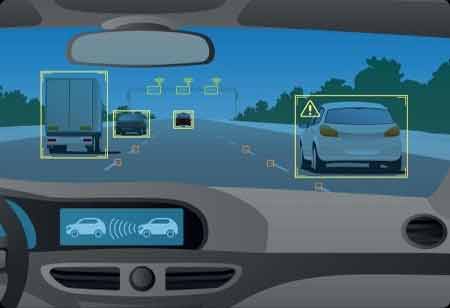THANK YOU FOR SUBSCRIBING
THANK YOU FOR SUBSCRIBING
Be first to read the latest tech news, Industry Leader's Insights, and CIO interviews of medium and large enterprises exclusively from Auto Tech Outlook

By
Auto Tech Outlook | Wednesday, August 18, 2021
Stay ahead of the industry with exclusive feature stories on the top companies, expert insights and the latest news delivered straight to your inbox. Subscribe today.
The automobile industry is developing rapidly with self-driven vehicles, and its objective to increase public safety.
FREMONT, CA While many drivers are still cautious about self-driving cars, the industry's progress promises it better for public safety, as human error is responsible for more than 90 percent of all vehicle accidents.
The human brain is hardwired to comprehend huge volumes of inputs and make split-second decisions, despite their inadequacy. Autonomous vehicles must have a similar capability to understand traffic regulations like traffic signs, road markings, and speed limits while also identifying, analyzing, and reacting to numerous unexpected factors such as objects, other cars, bikers, pedestrians, and more.
To match the driving ability of human drivers, autonomous vehicles will need to go at least 11 billion miles on the road, but the COVID-19 pandemic has created a huge challenge. Many of these training fleets have been suspended due to the pandemic. But some of these startups claim to utilize data acquired by manually-piloted vehicles equipped with sensors. They want to use artificial intelligence-generated simulations rather than a traditional practice to educate their cars to navigate roads.
These firms have collected numerous real-world data that can be utilized to generate these simulations. These simulations can educate autonomous vehicles on navigating real-world roadways without ever leaving the garage due to multiple images that can be used to teach them how to recognize traffic signals, real and synthetic audio data, and data that can generate detailed 3D, high-definition maps of roads.
Scene-Compliant GANs Help Autonomous Vehicles Predict Movement on the Road
Researchers recently published a report claiming that they had improved autonomous vehicles' ability to precisely forecast the movement of nearby vehicles on the road. To avoid crashes, these autonomous cars must be able to accurately anticipate the behaviors of other vehicles in their vicinity.
GANs (generative adversarial networks) are sophisticated networks that enable self-driving cars to generate difficult predictions. Generators and discriminators, two adversarial models, used in GANs, work together to enhance each other. The generator creates synthetic instances from random backdrops, like images. The discriminator must next identify these synthetic examples against real-world cases from the training data. The discriminator educates the generator to enhance its performance as it learns to reliably identify synthetic instances.
One of the most critical aspects of self-driving technology is motion prediction, which models the future behavior and uncertainty of the tracked actors in the self-driving vehicles area. The technique outperforms the existing state-of-the-art in GAN-based motion prediction of the surrounding players, creating more accurate and realistic trajectories, according to extensive qualitative and quantitative studies.
 Copyright © 2025 AutoTech Outlook. All Rights Reserved | Privacy Policy | Subscribe | Sitemap | About us | Feedback Policy | Editorial Policy
Copyright © 2025 AutoTech Outlook. All Rights Reserved | Privacy Policy | Subscribe | Sitemap | About us | Feedback Policy | Editorial Policy 



